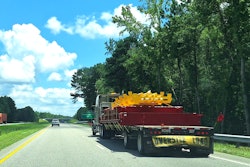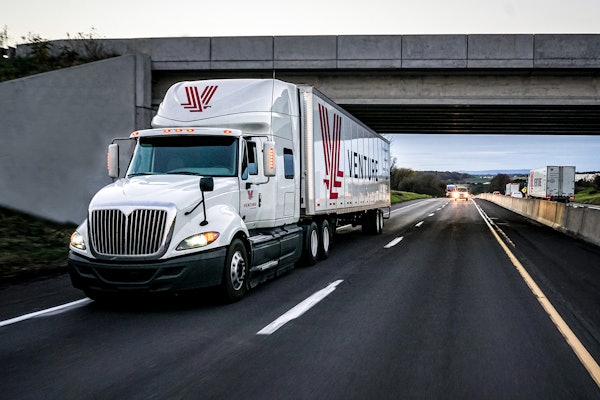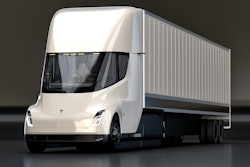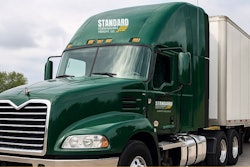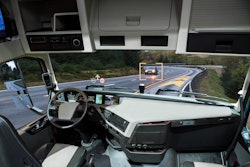Did you know there were laws limiting truck noise levels?
You’ve probably seen no idle zones and no Jake Brake zones posted on roadside signs. Those rules are usually city or county ordinances or sometimes state-wide regulations. But there is a federal regulation from 1976 covering every truck sold in the U.S. The rule limits the noise level of trucks as they pass by at low speed, including an explicitly defined test protocol.
In 1972, Congress passed the Noise Control Act to “promote an environment for all Americans free from noise that jeopardizes their health and welfare.” The rules were codified through the Environmental Protection Agency (EPA) including a public notice of rule making issued in 1974 and with the first effective date starting in 1978. Subsequent revisions/clarifications came in the 1980s.
The pass-by noise test protocol is extremely detailed, requiring very controlled conditions and site specific noise measurement equipment, and protocols for operating the truck during the test. Truck manufacturers were expected to self-certify to these standards. Labels were put on trucks indicating each OEM had certified the truck.
The test involves accelerating at low speed, essentially putting the pedal to the metal, and driving by sound meters carefully located so as to not be impacted by surrounding equipment, buildings, terrain, etc. Tests needed to be done in low wind conditions as wind can greatly impact how sound propagates.
The requirements still are in place today. They state that newly manufactured trucks must not exceed 80 dBA when measured at 15 meters during acceleration under 56 kph. The metric dBA is short for A-weighted decibels, a scale reflecting how human ears hear noise by comparing a measurement to a reference value.
One source indicated there are also noise standards tied to commercial vehicle speed: 83 dBA under 35 mph (56 kph), 87 dBA above 35 mph, and 85 dBA when stationary.
Some math is needed here to put noise levels into perspective. dBA is a logarithmic scale, suffice it to say that every 3 dBA increase translates to doubling the sound power intensity. A 3dBA increase is an amount ears can reasonably discern as louder. A 3 dBA reduction halves the sound power intensity.
The 80 dBA requirement is roughly equivalent to being in a very noisy restaurant, or a police siren going by, a vacuum cleaner, hair dryer, etc. While 60 dBA might be a quiet conversation with one person sitting a few feet from you. A 100 dBA would be like operating a chainsaw or jackhammer or being near the speakers at a rock concert.
There is a whole career available in automotive engineering labeled the NVH expert. NVH stands for noise, vibration and harshness. NVH experts are rare, and good ones are invaluable in figuring out what is causing noise, and what can be done to mitigate it. In my opinion, NVH engineers are on the same level as experienced surgeons. A great NVH engineer has all the sensory skills of a wine sommelier combined with the practical experience of a vintner, and the marketing skills of wine wholesaler.
Exposure to sound can impact health in a number of ways. Damage to hearing occurs if the exposure is prolonged. In the last several years, I’ve met several older truck drivers and truck engineers who have hearing loss in their left ears. They generally feel the damage came from driving older heavy-duty trucks with cab-mounted vertical exhaust stacks. Many of the latest very aerodynamic tractors from OEMs come with horizontal exhausts under the chassis, or on the back of sleepers, placing the source of noise farther from the driver.
Sound also impacts fatigue. Working in a high-noise environment for long periods of time is physically more stressful on the body. NACFE has interviewed a number of drivers covering the spectrum from ones in their 20s to ones in their 70s. They universally agree that driving a quiet electric truck leaves them more energized at the end of the work day versus driving the noisier diesels.
The NVH term highlights that there is a significant connection between noise and vibration. The rotation of mechanical things like pistons, valves, drivelines, tires, air conditioning fans, alternators, gears, etc. all produce sound. The contribution of those rotational sounds to the noise of a truck are fairly easy to figure out as each has a tell-tale frequency. Other noises like suspensions articulating are more challenging as they are much more random.
Air also is another significant source of noise. Less aerodynamic trucks tend to have louder noise levels than aerodynamic ones. One major truck editor in 2014 who drove the very aerodynamic Peterbilt/Cummins SuperTruck 1 found it was quiet enough to do in-cab video interviews at highway speeds.
One of the marks of excellence in noise reduction is often simply stated as “I could hear the radio” or “I could talk to my partner.” The latest very aerodynamic diesel trucks offered by OEMs are reaching this point. The hydrogen fuel cell and battery electric ones are there, too.
Cab interior noise levels have become informal selling features. Customers are becoming more demanding expecting low noise in their trucks, just as they are now getting in their cars and pick-up trucks. The challenge for NVH design is that as the noise level decreases, less significant noise sources are suddenly noticeable.
Creaks and rattles that would not be noticeable in an older vehicle because they were lost amid louder sources can become annoying in a quiet truck. This places additional pressure on interior trim designers to focus on details they might have been able to ignore in the past.
The aerodynamic noise from small exterior features that weren’t heard in the past are now very noticeable, pressuring aerodynamicists to improve those details.
Powertrain engineers find they have new requirements to reduce sources of noise as well. The NVH requirements have become much more significant than those for the 1950s to 1990s vintage cabs.
Even tires contribute to noise levels. The emphasis on low rolling resistance tires to get better fuel economy has contributed to reducing noise levels near freeways. Lower resistance tires mean less noise. That noise impacts both the driver in the cab and pedestrians nearby.
Reduction in vibration associated with fewer moving parts in fuel cell and electric trucks is a major contributor to noise reduction. That reduction also translates to reducing mechanical failure modes, reducing frictional heat, and other contributors to warrant claims and out-of-service events.
NVH requires a system perspective on the truck, trailer and driver. The vehicle in its entirety is a noise source and also a noise mitigator. Everything is related. Fixing one problem may or may not reduce the overall noise level of a vehicle. The whole system needs to be tuned for better sound management.
Noise reduction is good for driver performance, good for reducing warranty, good for neighborhoods and can be seen on the bottom line of a balance sheet.
For all those nameless, possibly under-appreciated NVH engineers at OEMs, keep up the great work.



